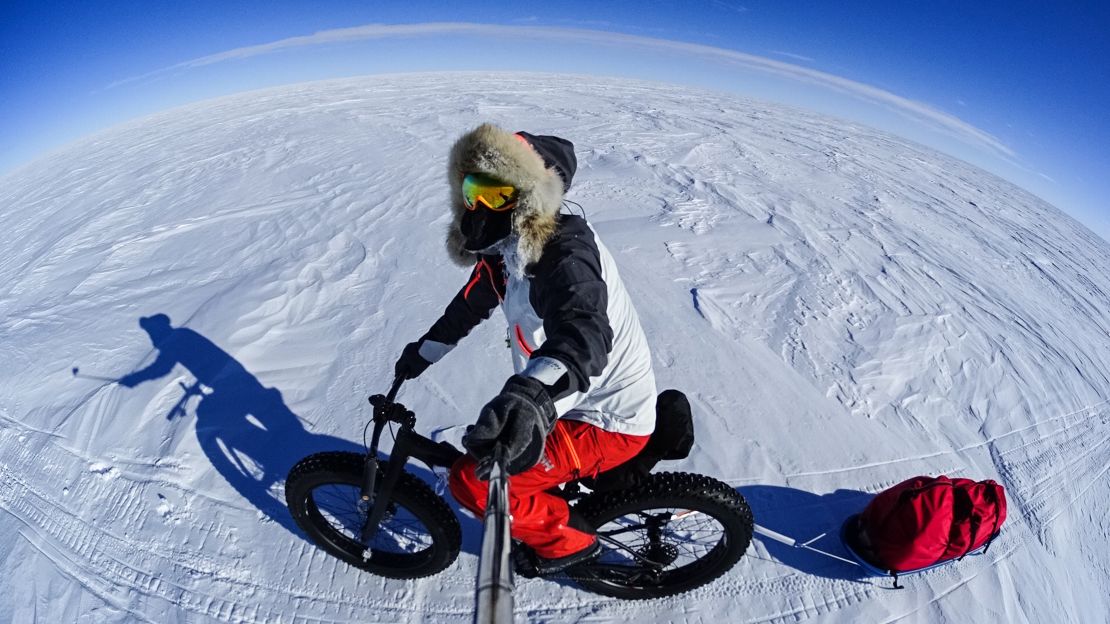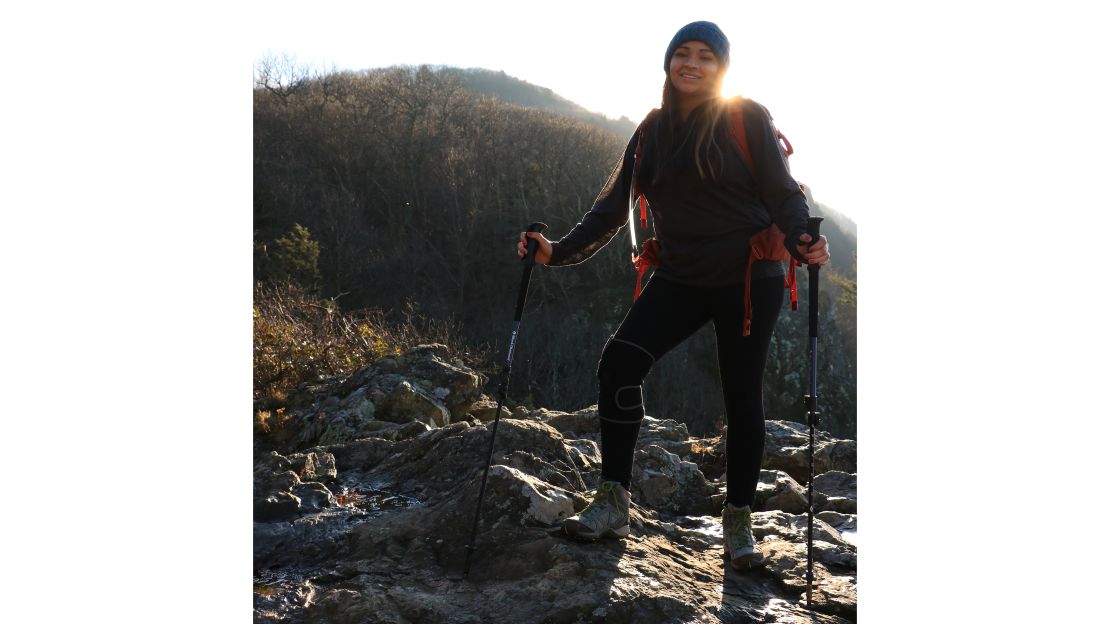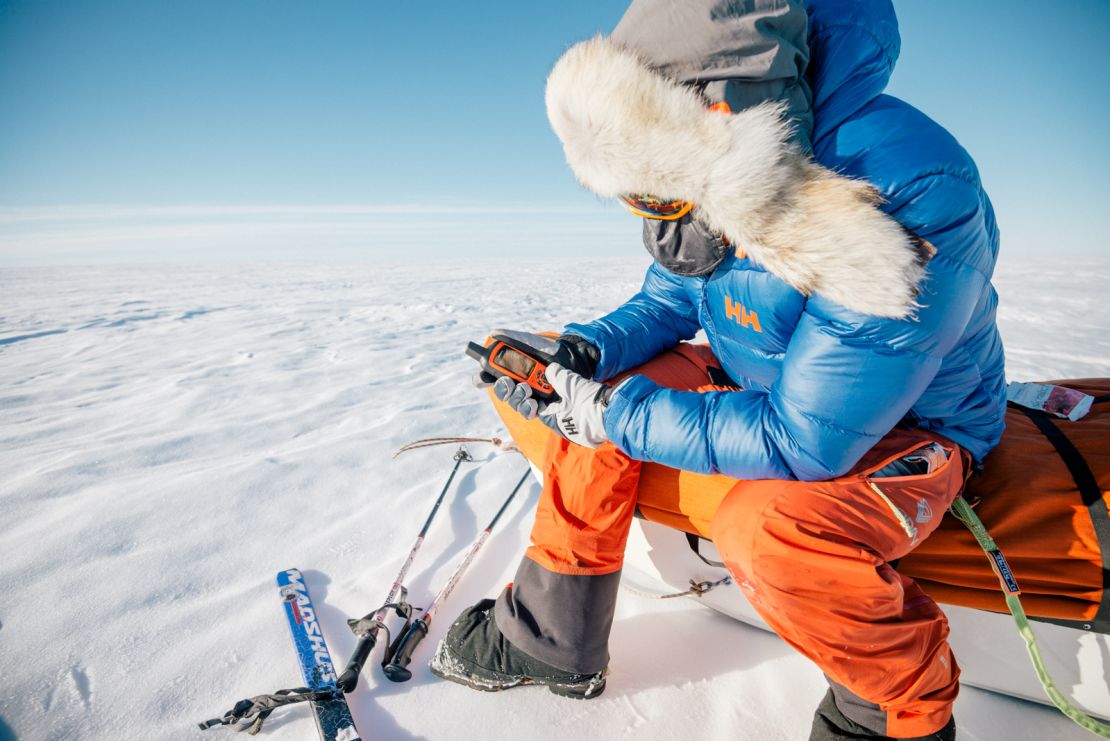Adventurer Eric Larsen has faced some of the harshest conditions on Earth. He has been to the South Pole and the North Pole, and he stood atop Mount Everest. Traveling by ski, dogsled and bicycle, he has crossed snowy landscapes scoured by howling winds.
“Worst-case scenario, the ambient temperature is minus 50 and you’re dealing with wind chills that are even colder than that,” said Larsen, who lives in Colorado. “It can be a complete whiteout, like being on the inside of a ping-pong ball.”
And while Larsen loves exploring, he’s not shy about his fondness for staying cozy.
“I do not like being cold,” he said.

He’s not the only one. Just 11% of Americans say winter is their favorite season, according to a Gallup poll conducted in 2005. But maybe with the right cold-weather gear, that perspective could change. Across 15 years of exploring the chilliest places in the world, Larson has learned that it’s all about what you wear.
“There’s no such thing as cold weather,” he said. “Only not enough layers.”
That’s not just true for hardy adventurers. The key points of dressing for harsh conditions, Larsen said, are relevant for people braving frigid city streets, too.
As the world copes with cold weather amid an ongoing pandemic, cold-weather clothing has new urgency. Experts say the safest way to socialize is outdoors, where the virus doesn’t spread as quickly as it does inside. In some places, kids are attending school in outdoor classrooms.
The outdoors aren’t just a pandemic backup plan, either. Spending time outside makes us happy, experts say, an effect that doesn’t go away when it’s cold.
In snowy places, a sled or snowshoes can turn the landscape into a giant playground. Even if there is no snow on the ground, winter walks mean encounters with beloved birds, such as the dark-eyed junco, that only appear this time of year. It’s beautiful and fun: but only if you dress for the cold.
Whether you’re seeing loved ones around a winter campfire, hiking with family or playing at recess, staying warm is important. So, we asked the polar explorer for his cold-weather clothing tips, then got some extra advice from an ultra-runner and a camping pioneer. Here’s what they said about getting dressed this winter.
Step 1: Pick a base layer

A thin, light base layer is the first thing that goes on your body, Larsen said, where it will wick moisture away from your skin. That means you won’t have a damp coating of sweat cooling you off.
“The base layer is really, really important,” agreed Mirna Valerio, an endurance athlete who lives in Vermont. Valerio, who has completed more than a dozen ultramarathons — races longer than 26.2 miles — said a good base layer is key to staying warm in fluctuating weather conditions.
“I’m looking for something that’s fitted, that’s not loose,” she explained. “It needs to be really close to my skin.” A base layer can be made from natural materials such as wool or silk, or a synthetic material designed specifically for the outdoors. Cotton is out: If it gets wet, cotton can make you dangerously cold.
Valerio, who once blogged under the handle “FATGIRLRUNNING,” said it’s key to find a layer that fully covers your torso, which can be challenging for people with bigger bodies.
“It needs to be long enough where it doesn’t roll up,” she said, noting that plus-size people should avoid brands that simply scale up their “straight size” clothing, rather than designing specifically for each body type. Valerio wears silk long underwear from L.L. Bean, a sponsor, but also recommends plus-size options from brands prAna and Oiselle.
Step 2: Add some insulation
The next thing to go on your body will be a bit thicker. Just like the insulation on a house, the midlayer is what keeps all the heat in.
A “midlayer” could be a wool sweater, a lightweight down jacket or a fleece, said Valerio, who usually opts for wool. “That technical wool is going to help regulate your body temperature,” she said, noting that wool will keep you warm even when it’s wet.
Down jackets are popular, too, because they’re light, warm and easy to pack. If that’s what you choose, just make sure the jacket doesn’t get wet, because it will lose much of its insulating power.
Step 3: Block wind and rain

“I actually really love being in the rain,” said Ambreen Tariq, an avid outdoorswoman and the founder of social media initiative @BrownPeopleCamping, which promotes diversity in public lands. “But waterproof clothing is really, really important for getting through those times.”
That’s where the third component of layering comes in: a weatherproof coat that will keep out the elements, so your inner insulation stays dry and warm. Tariq, who lives in Washington, DC, emphasized that it’s a good idea to find a coat with a hood to prevent cold, rain and snow from seeping into your neck and head area.
There are two key words to keep in mind when shopping for this layer. “Waterproof” coats, which are generally a bit more expensive, are intended to keep all moisture out. Pick up one of these if you’re facing heavy rain.
A “water-resistant” coat, on the other hand, is made to repel lighter rain and snow. This can be a good option if you want some wind protection and you don’t expect to see much precipitation.
Bonus round: Head, hands, feet and moisture management
All three experts emphasized that wearing a warm hat goes a long way toward keeping you warm when it’s chilly out. On really cold days, you can add a buff or gaiter that wraps around your neck.
Hands and feet are equally important. Start with roomy shoes or boots, then add a pair of warm, wooly socks for toasty feet. Still cold? Larsen recommended sliding an insole into your shoes to add a bit more insulation.
And always keep a pair of gloves on hand: They’re easy to throw in a bag when heading out the door and will contribute to your overall comfort in a major way.

But staying warm on a cold day doesn’t stop with getting dressed, the experts said. It sounds nonintuitive, but you also need to know when to start taking clothes off.
“I’m hyper focused on not getting too hot,” Larsen, the polar explorer, said. If you get sweaty, that sweat will eventually cool off and steal your heat. “As you start getting warmer, as you potentially start sweating, you need to start removing some of those layers or modifying those layers.”
Coat with zippered vents under the arms let you add some ventilation, or you can open the front of your coat. Otherwise, simply strip off an extra layer to keep your cool.
Get CNN Health's weekly newsletter
Sign up here to get The Results Are In with Dr. Sanjay Gupta every Tuesday from the CNN Health team.
If you’re out moving around, Larsen said you’ll need to adjust your clothing throughout the day. You’ll warm up when working hard, and cool back down when you stop to sit down or eat a snack. Paying attention to how you’re feeling is key.
“You want to make sure you’re taking care of yourself, and your own body, first,” he said. “You need to be mindful.”
Tips to go
• There are three basic components of winter dressing: a moisture-wicking base layer, a warm middle layer and a weatherproof outer layer.
• Don’t forget a hat and hood! Keeping your head warm helps raise your core temperature, too.
• Throw some gloves in your bag. It’s a wintertime habit your hands will thank you for.
• Adjust throughout the day. If you’re getting warm and sweaty, remove a layer to ensure you don’t get cold later.
Jen Rose Smith is a writer based in Vermont. Find her work at jenrosesmith.com, or follow her on Twitter @jenrosesmithvt.






